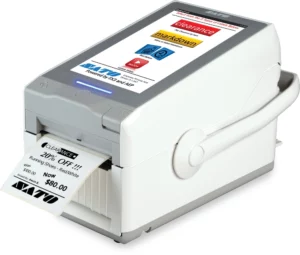Asset Tracking Save Money
In an ideal world, forecasting and asset tracking software would provide just enough data on each particular item’s location and function in operation so you’d perfectly assess your business inputs and outputs.
Asset tracking is critical to any business’s success. Simply put, business equipment and machinery are expensive. You’ll need to buy and rent a variety of machinery. When you don’t track your assets, you’re not only wasting money, but you’re also giving your partners and employees the incorrect impression if you fall behind on your business milestones and goals. Some equipment is also subject to depreciation and quarterly maintenance, so keeping track is key to your entire operation.
Many companies seeking funding, as well as those that are already established, do not understand how to prevent losing money on their assets. These suggestions will assist you in avoiding this by highlighting the 4 ways RFID asset tracking technology can improve your business and save you a lot of money in the process.
4 Ways RFID Asset Tracking Can Save Money For Your Business
Never Waste Time Searching for Your Equipment
One of the most obvious and immediate advantages of automated asset tracking is that it reduces the amount of time you spend hunting for items and equipment. Staff will be able to swiftly obtain what they need when they need it if they have a clear image of where equipment and tools are located.
Research clearly shows that Receiving time is reduced by 90% for manufacturers and distributors that use RFID technology in their supply chain. You can quickly and accurately discover the goods, returnable transport items, and raw supplies you want using RFID technology. This not only helps employees work more effectively but also reduces process delays caused by critical equipment that can’t be found or isn’t available.
Eliminate Manual Tracking and Recording Work
Manual tracking takes time and is not always accurate. If you’re operating a large business, it might take long for employees to make their way around and manually log data, which creates a delay between the logging and reporting times.
With RFID technology, you’ll be able to depend on the information you have while automating asset monitoring, which will also help you reallocate workers who would have previously spent time manually gathering this data to other, more useful duties
With the extra time your employees now have on their hands, they can focus on improving their performance, focus on other tasks and deliverables, and have time for more creative work.
Limit Your Miscellaneous Item Loss Rate
Returnable Transport Items (RTIs), for example, are particularly prone to be lost or damaged. Individually, they’re inexpensive, so it’s easy to overlook a missing RTI or a broken wheel, but the expense of replacing these components over time may add up to a large sum.
Accountability is linked to transparency and visibility. RFID tracking data is gathered regularly and reliably, so you’ll always know where your most important assets are. Test equipment and tools are examples of these assets. When an asset is harmed, it becomes much easier to trace where the damage happened in the entire process, where training is required, and who was accountable. Accidents happen, and certain breakages are unavoidable, but knowing that your belongings are being adequately monitored makes you feel safer. It motivates workers to take more responsibility for assets in their care, minimizing the probability of damage due to neglect.
Gain a 360 View Over Your Operations
You can typically enhance the way your assets are used if you have visibility into them. It’s much simpler to notice trends in where and when assets are utilized when they’re tracked over time, and some of these patterns will probably lead to wasteful or inappropriate equipment utilization.
For example, if your data reveals that a certain tool or gadget is being used for a longer than anticipated amount of time, you may look into why this is occurring and take action. The item may have a flaw that makes it difficult to utilize. In this situation, you can take the appropriate actions to correct the problem or replace the item. Alternatively, the people in charge of utilizing that piece of equipment may require further training to assist them to get things done faster. The first step in improving asset utilization is to understand how they are used over time so you can have a complete understanding of how your workflow is running.
What Other Ways Can RFID Technology Help My Business?
Asset monitoring, access and production management, and even the astounding precision of the data delivered by Radio-Frequency Identification technology continue to revolutionize commercial industries around the world. With RFID solutions, every firm, large or small, in any sector can become better, more efficient, and more effective. At the end of the day, it’s critical to keep track of your company’s assets.
Learn more about RFID asset tracking and its various benefits here.


